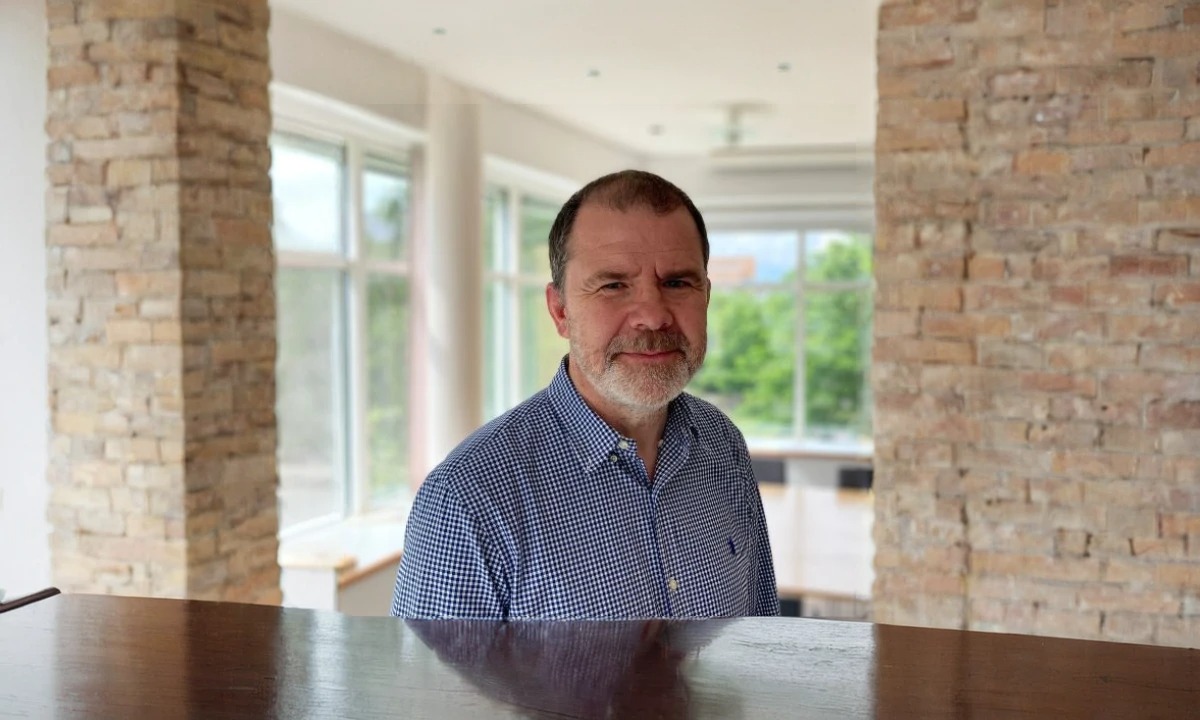Beyond Compliance: Reframing Resistance in Clinical Practice
At the heart of modern healthcare lies a paradox: despite an ever-expanding body of clinical evidence, translating that evidence into consistent practice remains elusive. This difficulty is not simply a matter of inertia among healthcare professionals or a lack of awareness; it is a structural, cultural, and cognitive impasse. Many interventions designed to enhance patient outcomes are stymied by multifactorial resistance embedded deep within the healthcare system. Efforts to induce behavioral change in clinical routines—particularly when they implicate entrenched hierarchies or cross-disciplinary boundaries—often fail not because of faulty data but because they overlook the complex ecology of clinical environments.
Change in health systems is rarely linear. Interventions are often aimed directly at the behaviors of individual clinicians, based on the belief that altering knowledge or attitudes will lead to action. Yet this view is myopic. It misses the deeper terrain—interpersonal networks, institutional mandates, economic policies, and even patient belief systems—all of which interact dynamically to enable or obstruct clinical reform. The result is a persistent gap between what is known and what is done.
In reality, healthcare is governed not by logic alone, but by an intricate web of micro- and macro-level determinants. A physician may receive detailed evidence about the benefits of hand hygiene or diabetes guideline adherence but still behave in ways that contradict those recommendations. This isn’t cognitive dissonance; it’s the outcome of systemic pressures, misaligned incentives, and inadequate infrastructural support. Without a theoretical lens, improvement efforts often falter because they misattribute failure to individuals rather than to systems.
The clinical landscape is further complicated by unpredictable human factors. Professionals hold implicit biases, rely on heuristic decision-making, and function within social microcultures that reward conformity and penalize dissent. Institutional silos and power asymmetries compound the challenge. Yet instead of confronting this complexity, traditional quality improvement strategies tend to oversimplify. They treat interventions as isolated inputs rather than contextualized engagements.
What emerges, then, is the necessity for a deeper, theory-informed approach to clinical change—one that recognizes the multi-layered nature of healthcare practice and the need for coherent frameworks to diagnose, plan, and evaluate interventions. Change does not happen in a vacuum. It is orchestrated—or thwarted—by forces that can be understood only when examined through the right conceptual lenses.
The Architecture of Theory: Process and Impact Models Explained
At the core of the push toward systematic change lies a foundational bifurcation in theoretical paradigms: process theories and impact theories. These two streams of thought offer complementary blueprints for understanding how healthcare improvement can be planned, executed, and sustained. Process theories focus on the “how” of change—detailing the operational mechanics of implementation, from planning to execution. Impact theories, on the other hand, interrogate the “why”—they articulate hypotheses about causality, mechanisms of effect, and conditions of success or failure.
Process theories are often the scaffolding upon which change is built. They propose stage-wise progressions through which individuals or systems move—from initial awareness to full integration. Numerous models, including those by Grol, Rogers, and Prochaska, present variations on this theme. These frameworks emphasize that individuals and groups move through discrete, identifiable stages, each governed by different psychological and structural dynamics. Recognizing these phases allows for tailored interventions—ranging from persuasive communication for early-stage skeptics to structural reinforcement for late-stage adopters.
Impact theories, in contrast, are explanatory engines. They delve into the psychological, sociological, and organizational mechanisms that determine the efficacy of an intervention. For instance, cognitive theories emphasize decision-making rationality, suggesting that clinicians must be provided with timely, comprehensible information to alter behaviors. Motivational theories stress the role of perceived norms and self-efficacy, while organizational theories investigate how structure, leadership, and culture mediate implementation success.
Together, process and impact theories form a powerful analytic dyad. While process theories map the terrain of change, impact theories illuminate its gravitational forces. Effective quality improvement initiatives do not rely on one or the other, but rather integrate both—drawing from process frameworks to structure delivery and from impact theories to predict and explain outcomes. For example, a diabetes care improvement project might use a process theory to identify where clinicians fall on the readiness-to-change spectrum and an impact theory to address why particular subgroups remain resistant.
This theoretical pluralism underscores a critical insight: change is not monolithic. It varies by context, profession, and population. Therefore, the indiscriminate application of one-size-fits-all strategies often leads to inertia. Instead, interventions must be designed with a nuanced appreciation of the underlying forces at play—forces that only theories can help distill into actionable knowledge.
Dissecting Complexity: Multilevel Influences on Clinical Behavior
Healthcare delivery systems are inherently complex adaptive systems. They comprise interdependent agents—clinicians, administrators, patients—who interact in unpredictable ways. Theories of change must, therefore, account for this multilevel complexity. In clinical contexts, determinants of behavior span from individual cognition to macroeconomic forces. Each level—professional, social, organizational, economic—interacts with the others to shape performance patterns and reform trajectories.
At the individual level, cognitive, educational, and motivational theories dominate. These models explain how personal knowledge, experiences, attitudes, and decision-making styles impact behavior. A physician who undervalues hand hygiene may not be recalcitrant, but rather guided by outdated heuristics or skewed risk assessments. Educational theories further suggest that adults learn best when interventions are problem-based and self-directed, emphasizing relevance over abstraction.
In the social realm, theories of communication, social learning, and peer influence take precedence. Behavioral modeling by respected colleagues often exerts more influence than top-down mandates. Social networks determine the diffusion of innovation, with early adopters and opinion leaders serving as vectors of change. This insight explains why even robust clinical guidelines often remain inert until they gain traction within professional communities.
At the organizational level, complexity intensifies. Theories of innovation, quality management, and integrated care reveal that structural characteristics—such as decentralization, interdisciplinary collaboration, and organizational culture—are vital to change. Institutions with strong teamwork norms, clear process ownership, and flexible governance structures are more likely to adapt successfully. Conversely, rigid hierarchies, fragmented care pathways, and siloed leadership frequently obstruct reform.
The economic and political context introduces yet another layer of modulation. Reimbursement models, regulatory mandates, and contractual frameworks create incentive structures that either facilitate or impede change. Theories rooted in economics argue that aligning financial incentives with quality goals—through pay-for-performance or targeted contracts—can recalibrate organizational priorities. Yet these strategies must be wielded with precision to avoid unintended consequences like overtreatment or inequity.
What becomes clear is that each level—individual, interpersonal, organizational, systemic—offers both levers and landmines. A successful change initiative must diagnose where resistance lies and apply theory-informed strategies appropriate to that stratum. Only by embracing the full ecological complexity of healthcare can improvement efforts hope to gain durable traction.
Real-World Applications: Hand Hygiene and Diabetes Care as Test Cases
Theory is only as valuable as its translational potential. Two illustrative examples—hand hygiene compliance and diabetes management—demonstrate how theoretical frameworks can be harnessed to dissect real-world challenges and design more effective interventions. Both represent critical domains in patient safety and chronic care, respectively, yet both suffer from persistent implementation gaps despite longstanding awareness and guideline availability.
In the case of hand hygiene, the challenge lies in converting well-established evidence into habitual practice. Cognitive theories explain that professionals may undervalue handwashing due to incomplete knowledge or flawed risk assessments. Social learning theory posits that observed behavior among peers—particularly senior clinicians—shapes norms more than policies do. Motivational theories suggest that clinicians must feel both competent and socially compelled to act, requiring reinforcement from respected colleagues and visible institutional support.
Organizational theories further indicate that institutional culture and workflow design affect compliance. Facilities lacking in structural supports—such as accessible sanitizing stations or reminder systems—indirectly discourage behavior. Even when knowledge is present, the absence of supportive infrastructure often nullifies its impact. Economic theories add that when hospitals internalize the costs of hospital-acquired infections, they are more likely to implement rigorous monitoring and incentive programs.
Diabetes management, conversely, exemplifies the complexities of chronic care coordination. Here, no single behavior governs success; instead, multidisciplinary collaboration, patient education, and longitudinal tracking are required. Process theories identify the need for staged engagement, from clinician awareness to sustained integration. Impact theories highlight the importance of professional self-efficacy, interprofessional communication, and structural alignment.
Integrated care theories emphasize the redesign of workflows—co-locating services, delegating tasks, and establishing care pathways. Teamwork theories stress goal alignment and participatory decision-making among care providers. Organizational learning theories suggest that continuous feedback, shared metrics, and cross-institutional knowledge exchange drive iterative improvements. Contracting and reimbursement models, when aligned with quality targets, further reinforce accountability.
Together, these examples show that no single theory suffices. A multifactorial, theory-informed diagnostic process is essential. By applying a layered framework to each case, stakeholders can move from generic interventions to tailored, context-specific strategies that are far more likely to succeed—and endure.
Stage-Gated Transformation: Navigating the Ten-Step Model of Change
To operationalize complex change, particularly in multifaceted healthcare systems, linear models are insufficient. Instead, the ten-stage model of change, a synthesis of multiple stage-of-change theories, offers a more precise scaffolding. It posits that change is not a single decision or event but a sequence of interrelated phases, each governed by distinct barriers and requiring distinct strategies. This model translates abstract theories into concrete planning tools, rendering the architecture of change navigable.
The initial stages—awareness and interest—represent the orientation phase. Here, the challenge lies not in opposition but in oblivion. Clinicians may be entirely unaware of innovations or disinterested due to perceived irrelevance. Strategic interventions in this phase require the dissemination of brief, high-visibility messages via trusted sources, often using peer-to-peer influence or audit feedback. Visibility is vital: without cognitive anchoring, no further engagement is possible.
The insight phase moves beyond awareness into comprehension and self-reflection. Clinicians must understand both the clinical rationale behind an innovation and their own deviation from best practice. This phase is typically characterized by cognitive dissonance, often resolved through comparative performance data. Audit and feedback systems are essential here—not as punitive instruments, but as mechanisms of reflection. Transparency becomes a catalyst for internal motivation.
Acceptance and decision-making form the next domain. Even with awareness and insight, clinicians may remain ambivalent. Here, motivational factors—attitudes toward the innovation, perceived social expectations, and self-efficacy—come into play. Intervention strategies include involving clinicians in the design and adaptation of changes, offering local customization, and showcasing early adopters. The decision to engage is not merely cognitive but affective and contextual.
The change phase marks the beginning of behavioral experimentation. Clinicians may attempt new routines, albeit inconsistently. This is the most fragile phase, vulnerable to relapse if early efforts are unrewarded or unreinforced. Support mechanisms—such as access to resources, skill-building opportunities, and visible managerial backing—are critical. Feedback loops should remain short and reinforcing, converting tentative trials into robust behaviors.
Finally, the maintenance phase ensures sustainability and systemic embedding. This requires that new behaviors become habitual and structurally supported. Interventions include integrating new routines into standard operating procedures, electronic health records, and institutional policies. Cultural reinforcement—through recognition, role modeling, and peer benchmarking—cements these behaviors. At this stage, change is no longer episodic; it becomes operationalized.
Cognitive and Motivational Drivers: The Psychology Behind the Professional
Within the ecology of change, the individual clinician remains a central node. Cognitive and motivational theories provide deep insights into how professionals perceive, interpret, and react to change interventions. These are not simply behavioral blueprints; they are models of professional reasoning, affective alignment, and perceived control—each of which must be calibrated for successful implementation.
Cognitive theories emphasize the decision-making processes of clinicians, often assuming a rational calculus of risks and benefits. They assert that underperformance stems from information deficits, misaligned heuristics, or outdated knowledge schemas. Thus, interventions must target information processing—providing timely, credible, and digestible evidence. Decision aids, evidence summaries, and structured clinical pathways become pivotal tools in this landscape.
However, cognitive theory alone is insufficient. Humans are not logic machines; they are emotional, social beings. Motivational theories such as the Theory of Planned Behavior add nuance by introducing attitudes, subjective norms, and self-efficacy as mediators of intention. Clinicians may understand the value of hand hygiene, for instance, but if they perceive social indifference or lack confidence under time pressure, compliance falters. Change strategies must therefore appeal to social belonging and perceived competence, not just reason.
Additionally, the attribution theory underscores how professionals rationalize failures. When clinicians externalize blame—for instance, attributing infection outbreaks to patient factors rather than hygiene lapses—change efforts are blunted. Interventions must carefully navigate these attributional biases, fostering environments where introspection is encouraged and defensiveness minimized.
Self-efficacy, a cornerstone of motivational models, is particularly potent. It is not enough for professionals to be told that change is necessary; they must believe they can enact it, even under constraints. Programs that showcase feasible models, facilitate small wins, and provide scaffolding during transition phases significantly bolster this belief. These approaches convert passive recipients of information into active agents of change.
Lastly, personal learning styles cannot be ignored. Reflective practitioners require evidence and time; pragmatists need hands-on trial opportunities; activists are drawn to novelty. Tailoring interventions to these varied cognitive profiles maximizes uptake. Theories become not just abstract ideas but personalized pathways to transformation.
Cultural Currents: Organizational Identity as a Determinant of Change
Culture is the silent force in every healthcare organization. It shapes what is seen, what is valued, and what is permissible. Organizational culture is not simply an atmospheric condition; it is a determinant of performance, and theories that illuminate its contours are essential to any serious effort at reform. These theories do not reduce culture to mission statements or leadership edicts; instead, they map the underlying assumptions, rituals, and relationships that govern everyday behavior.
Two dominant conceptualizations of culture stand out. The first views culture as a variable—an attribute that can be measured and managed. This view aligns with frameworks like the Competing Values Model, which classifies cultures along axes of control versus flexibility and internal versus external orientation. In this schema, clan cultures emphasize teamwork and loyalty, while hierarchical cultures prioritize rules and stability. The implication is clear: innovation thrives more easily in flexible, externally oriented cultures than in rigid, internally focused ones.
The second perspective sees culture as constitutive. Here, the organization doesn’t possess a culture; it is a culture. This deeper view suggests that culture is embedded in language, stories, and daily rituals. Change, therefore, requires not just new procedures but cultural reinterpretation—altering how members of the organization make sense of their world. This aligns with Schein’s theory, which highlights the importance of shared learning, especially in navigating uncertainty.
The practical application of these theories is profound. In the context of hand hygiene reform, for example, it is insufficient to install more dispensers or revise protocols. One must embed infection control into the institutional identity, frame it as a shared value, and ensure it is modeled by leadership. Similarly, in diabetes care, multidisciplinary integration will fail if professional subcultures continue to operate in isolation. Cross-pollination of values, not just workflows, is needed.
Leadership plays a catalytic role in cultural transformation. Formal authority must be matched with symbolic action. Leaders signal priorities not only through policy but through presence, participation, and language. Culture is shaped less by what is said and more by what is observed. Thus, theories of cultural change emphasize the visibility of commitment as a mechanism of reinforcement.
Ultimately, culture is both a barrier and a bridge. When aligned with quality goals, it accelerates change; when misaligned, it neutralizes even the most sophisticated strategies. Understanding and reshaping culture is not an adjunct to improvement—it is the very terrain upon which it unfolds.
Closing the Loop: Toward a Theory-Informed Future in Healthcare Improvement
Despite decades of effort and the proliferation of quality improvement methodologies, systemic transformation in healthcare remains sporadic and fragile. The central thesis emerging from this extensive theoretical landscape is unequivocal: theory matters. It provides the conceptual architecture to design, implement, and evaluate change with precision and purpose. Theories are not ivory-tower abstractions—they are navigational instruments in the turbulent sea of healthcare reform.
Yet the empirical foundation supporting these theories remains patchy. While certain frameworks—such as teamwork models or self-efficacy constructs—have garnered empirical traction, others persist more on intuition than evidence. This discrepancy is not a reason to discard them but a call to empirically validate them through rigorous research. The current gap between theory and practice reflects not a lack of relevance, but a lack of systematic application and evaluation.
A pluralistic, context-sensitive approach is essential. No single theory can capture the full complexity of clinical environments. Instead, combinations of theories must be tailored to specific settings, populations, and challenges. In some cases, cognitive models may suffice; in others, organizational or political-economic theories must take precedence. This modularity is not a weakness but a strength—it allows theory to adapt to reality, not the reverse.
Future quality improvement efforts must adopt a theory-informed mindset from inception. Interventions should be explicitly grounded in theoretical assumptions, with clear mechanisms of action articulated and tested. Outcomes must be linked back to these assumptions, allowing for iterative refinement. This cyclical engagement with theory transforms improvement from an art to a science.
In conclusion, the journey toward better patient care demands more than good intentions or isolated efforts. It requires a disciplined, theoretically informed approach that bridges the gap between innovation and implementation, evidence and execution, system and self. Only by weaving theory into the very fabric of improvement can healthcare hope to evolve in ways that are not just incremental—but transformative.
Subscribe
to get our
LATEST NEWS
Related Posts

Clinical Operations
Beyond the Intervention: Deconstructing the Science of Healthcare Improvement
Improvement science is not a discipline in search of purity. It is a field forged in the crucible of complexity.

Clinical Operations
Translating Innovation into Practice: The Silent Legal Forces Behind Clinical Quality Reform
As public health increasingly intersects with clinical care, the ability to scale proven interventions becomes a core competency.
Read More Articles
Myosin’s Molecular Toggle: How Dimerization of the Globular Tail Domain Controls the Motor Function of Myo5a
Myo5a exists in either an inhibited, triangulated rest or an extended, motile activation, each conformation dictated by the interplay between the GTD and its surroundings.














